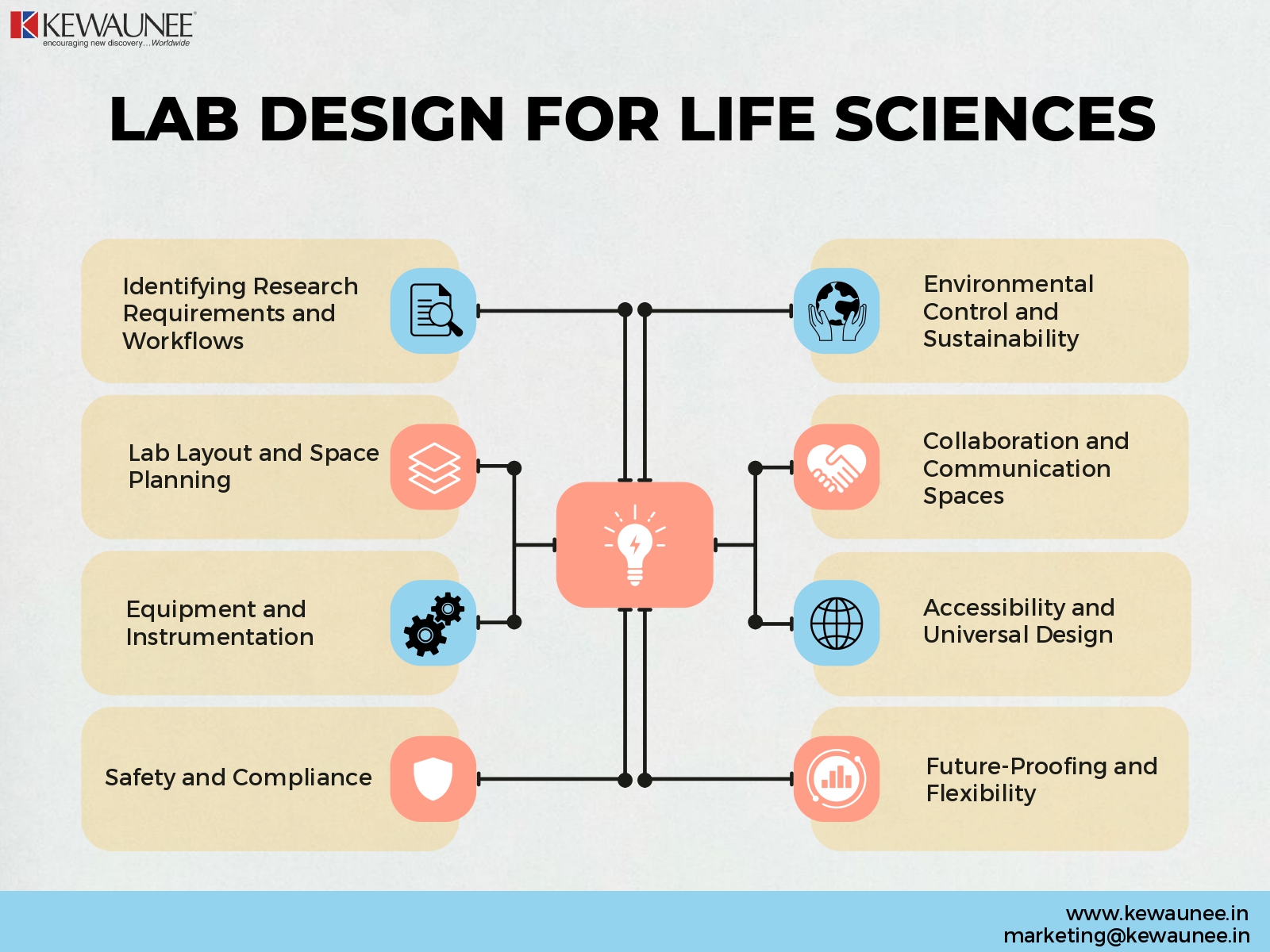Lab Design for Life Sciences
In the field of life sciences, purpose-built research and development (R&D) centers play a vital role in driving scientific advancements and breakthroughs. These specialized facilities are designed to meet the unique needs of life sciences research, encompassing various disciplines such as biology, pharmaceuticals, genetics, and more.
Lab design is a crucial factor in optimizing research and development processes, as it directly impacts safety, productivity, and efficiency. In this blog, we will explore the importance of purpose-built R&D centers in life sciences and how effective lab design can enhance research capabilities.
Understanding Life Sciences R&D Centers:
Purpose-built R&D centers are specifically designed to meet the unique requirements of life sciences research. These centers play a crucial role in fostering innovation, collaboration, and scientific excellence.
By providing tailored environments that align with research goals and objectives, institutions can create spaces that optimize research processes and maximize productivity. Understanding the core needs of life sciences research is essential in designing facilities that promote collaboration, efficiency, and scientific breakthroughs.
Identifying Research Requirements and Workflows:
The success of a purpose-built R&D center lies in its ability to support the specific research needs and workflows of scientists and researchers. Collaboration with the research community and stakeholders is crucial in identifying these requirements.
Through extensive discussions and consultations, institutions can gain insights into the scientific workflows, equipment needs, and spatial requirements of different research projects. This information serves as the foundation for effective lab design, ensuring that the facility optimally supports research activities and maximizes productivity.
Lab Layout and Space Planning:
Lab layout and space planning are critical aspects of lab design for life sciences R&D centers. An efficient and collaborative workspace is essential for fostering innovation and driving scientific discoveries.
Ergonomic design principles are crucial in ensuring the well-being and comfort of researchers, as they spend long hours conducting experiments. Integrating specialized areas such as wet labs, dry labs, and instrumentation rooms allows for seamless workflow and optimized collaboration.
Flexibility and scalability are also essential to accommodate future growth and adaptability. Support spaces, including offices, meeting rooms, and break areas, foster collaboration and create a conducive research environment.
Equipment and Instrumentation:
The selection and placement of research equipment and instrumentation are key considerations in lab design. Proper equipment selection and placement are essential for seamless workflow, researcher safety, and experimental success. Understanding the specific equipment needs based on research requirements and project objectives is crucial.
Integration of lab automation and robotics enhances efficiency and productivity in life sciences R&D centers. Specialized equipment and instrumentation, such as biosafety cabinets and incubators, are also vital in meeting the specific needs of research projects.
Safety and Compliance:
Safety is of paramount importance in any laboratory setting. Lab design for life sciences R&D centers should prioritize the incorporation of safety features and protocols. Proper ventilation systems and fume hoods ensure a safe working environment by removing potentially harmful substances and maintaining air quality.
Appropriate waste management systems are essential for the proper disposal of hazardous materials. Adhering to regulatory guidelines and standards, such as biosafety levels and chemical handling protocols, is crucial for the safety of researchers and compliance with legal requirements. Emergency preparedness and contingency planning further enhance safety in the event of unforeseen incidents.
Environmental Control and Sustainability:
Environmental control is essential in life sciences R&D centers to maintain optimal conditions for research. HVAC systems play a vital role in regulating temperature, humidity, and air quality within the facility. Cleanroom environments and controlled spaces are designed to meet the specific requirements of certain research projects.
Integration of sustainable practices and energy-efficient solutions in lab design is also important. This includes incorporating renewable energy sources and designing for water and energy conservation to minimize the environmental footprint of the facility.
Collaboration and Communication Spaces:
Collaboration and communication are key drivers of innovation in life sciences research. Designing collaborative areas within R&D centers is essential for fostering interdisciplinary collaboration and knowledge exchange.
Integration of technology and communication systems facilitates seamless communication and data sharing among researchers. Creating spaces for meetings, discussions, and informal interactions promotes collaboration and fosters a culture of innovation.
Accessibility and Universal Design:
Inclusivity and accessibility are crucial considerations in lab design for life sciences R&D centers. It is important to ensure that the facility is accessible for researchers with disabilities. Incorporating universal design principles creates inclusive and diverse research environments, providing equal opportunities for all researchers.
Ergonomic design principles enhance the overall usability and accessibility of the facility, ensuring that researchers can work comfortably and safely. Prioritizing accessibility promotes a more inclusive and innovative research environment.
Future-Proofing and Flexibility:
Lab design should not only address the current research needs but also anticipate future requirements and advancements. Designing R&D centers that are adaptable and flexible allows for accommodating evolving research needs.
Incorporating modular lab furniture and infrastructure enables easy reconfiguration as research projects evolve. Staying updated on emerging technologies and trends in life sciences R&D ensures that the facility remains relevant and can quickly adopt new research methodologies and equipment.
Conclusion:
Purpose-built R&D centers are instrumental in driving scientific breakthroughs in the field of life sciences. Effective lab design that aligns with research goals and objectives optimizesresearch processes, promotes collaboration, and enhances productivity.
By considering factors such as research requirements, lab layout, equipment selection, safety and compliance, environmental control, collaboration spaces, accessibility, and future-proofing, institutions can create purpose-built R&D centers that foster innovation, accelerate scientific discoveries, and contribute to advancements in the life sciences.
Lab design is not just about aesthetics but is a strategic investment that directly impacts the success of research and development efforts. By prioritizing effective lab design, life sciences institutions can create environments that empower researchers, maximize efficiency, and drive scientific progress.
Comments are closed.











